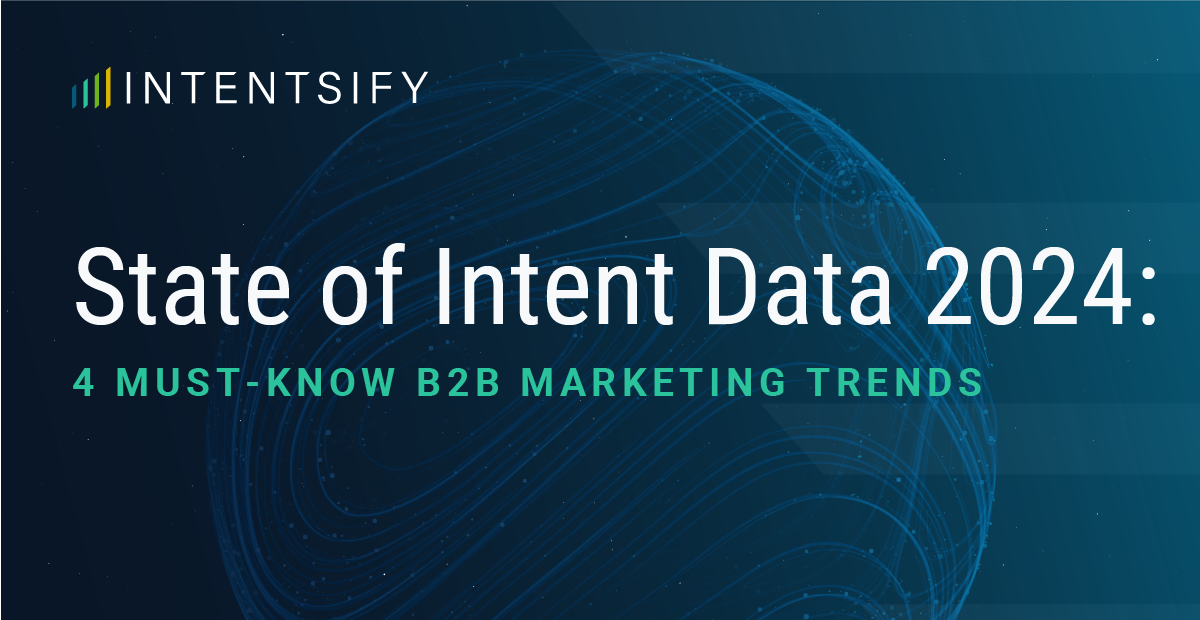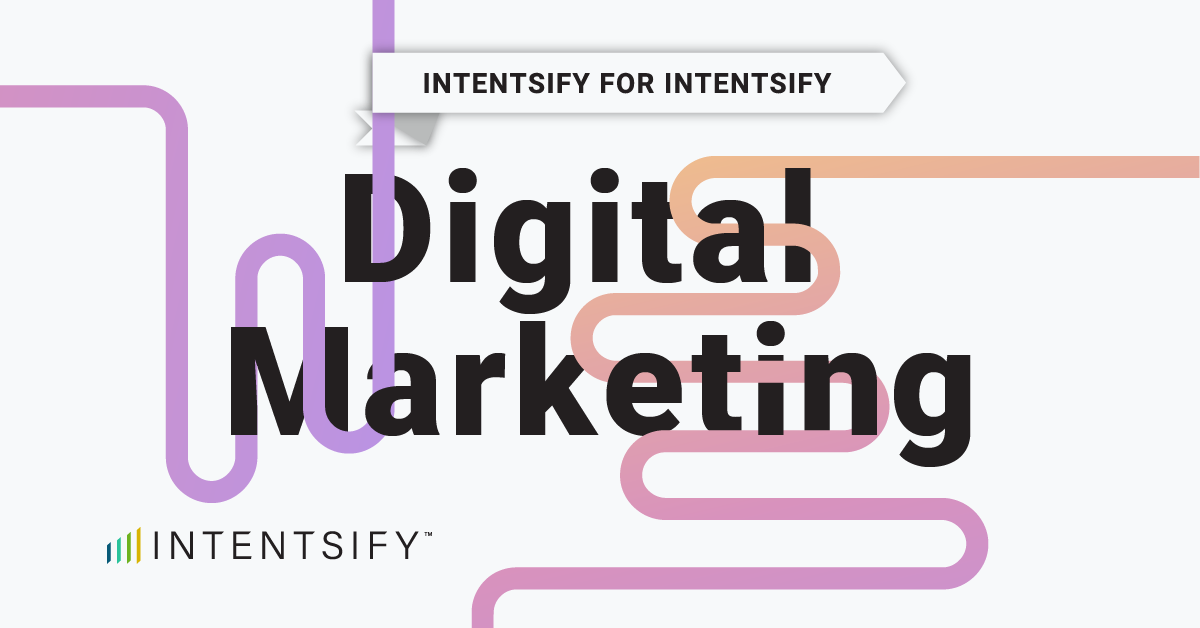A version of this article was first published on CMSWire.
The optimization of content syndication and other third-party demand generation programs have received much attention over the last year. The reasons why B2B marketing teams are investing heavily in this channel are varied and include:
- Covid-19 pandemic causing teams to reallocate events budget to other demand generating channels;
- Plateauing results from inbound marketing efforts alone;
- The rise in intent data adoption among B2B orgs and its positive results for third-party demand campaigns;
- The improvement of content syndication solutions themselves; and
- Improved education and skills among B2B marketers leveraging third-party demand gen programs.
Though the popularity and impact of content syndication initiatives have significantly jumped over the last year, it’s important for B2B marketing teams to understand everything that goes into a successful program. You can’t simply “set it and forget it.”
Your success will depend on many marketing inputs: account and persona targeting, the media partners you use, content selection, data-governing processes, marketing technologies used, emailing practices, follow-up messaging (for emails and BDRs), and more.
Whether you’re trying to troubleshoot current programs or gathering insights before launching a new campaign, here’s a list of common content syndication issues to look out for and how to fix them.
Media Partners Aren’t Generating Enough Leads
It’s fairly common for media partners (also known as publishers) to miss their lead-volume targets. And considering they have every incentive to fulfill their clients’ orders, such failures often reflect issues beyond their control. Below are the most typical reasons media partners aren’t achieving the lead targets you set for them.
Your Targeting Is Too Narrow
“Targeting” and “precision” are almost religious words for marketers. But like with anything religious, being too extreme is often more harmful than productive. Being too specific with your targets—whether regarding accounts or personas—often hamstrings your media partners.
My colleague Sarah Asbury, Director of Customer Success and Media Partner Relations at Intentsify, explains the challenge publishers face:
“A lot of the time we find media partners have a difficult time delivering on campaigns where targeted titles or qualifications are too specific. For example, I recently saw a customer wanting to target only property managers managing two or fewer buildings. Obviously, this represents a limited pool of individuals. Not only is it difficult for partners to ensure they reach these individuals with promoted content, but they also have to get them to download the content and opt in to be contacted.”
And that’s just the personas. Media partners are also frequently tasked with generating leads among a supplied target-account list (TAL)—which, by the way, is a great idea. Yet, if that list is too small, it further exacerbates the challenges media partners face. And when you cap the number of leads per account (which you absolutely should do), add on job-title targeting, deduplicate leads against prior campaigns, and require targeted individuals to “opt in” to being contacted (a requirement under the EU’s GDPR), you severely limit the available pool of leads.
To help achieve your campaign’s lead volume goals, it’s a good idea to:
- Provide media partners with a TAL comprising at least three times the number of accounts as the campaign’s lead goal; and
- Ensure that the accounts on the TAL employ your targeted job titles (this often means providing multiple job titles for similar roles; for example, “Director of Demand Generation” may also be “Director of Growth Marketing”).
You’re Selecting the Wrong Content Assets to Promote
It’s easy to cursorily select a few content assets for content syndication campaigns. This is a big mistake. Not only does this selection influence who and how many targeted individuals become leads, it also affects how well follow-up messaging will resonate with them.
The best practice is to carefully select your assets according to your buyer-journey map, aligning content to the targeted accounts’ and personas’ interests and funnel stage. (This blog post explains how to use intent data to accurately align content to target accounts’ interests.)
In general, content syndication campaigns are a top-of-funnel channel used to familiarize targeted personas to specific challenges, your brand, and your brand’s solutions (from a high level). In this regard, the content assets you select should:
- Be educational;
- Provide prescriptive guidance; and
- Briefly introduce your brand’s approach to solving a problem.
It’s best to provide your media partners with three to five content assets for each campaign. This will allow your partners to test different variables and optimize campaigns accordingly.
Further, put some thought into writing and providing partners with quality abstracts (i.e., summaries) for your content. Partners use these short explanations to promote the content via landing pages, emails, social posts, etc.
And while media partners will sometimes offer to write abstracts for you, keep this in mind: media partners are rarely subject-matter experts, and can understandably miss the mark when trying to highlight why your target audiences should download your ebooks, reports, guides, etc. Providing abstract copy to media partners upfront helps to ensure campaigns are launched quickly and effectively.
Low Email-Delivery Rate When Following Up With Leads
New techniques, tools, and types of account intelligence (e.g., intent data) has generally led media partners to generate higher quality leads and prospects for their customers in recent years. At the same time, however, more aggressive filtering by email service providers, has created difficulties for marketing organizations when following up with prospects via email.
Kathy Macchi, VP of Consulting Services at Inverta, explains this increasing challenge in detail:
“Problems with email delivery for campaign follow-up is hands down the biggest challenge we’re seeing with content syndication and third-party demand programs. It used to be generally possible for brands to cold email a prospect as long as the message wasn’t particularly ‘spammy’ or the brand didn’t have a terrible sender reputation, and the email would get delivered and placed in an inbox. However, today, unless a brand has a phenomenal sender reputation (top 5%) many email providers used by prospects will often either block the email or place it in a ‘promotional/advertising’ folder.
“So, while a media partner may be generating quality demand, delivering a list of prospects with valid lead data, the data handoff from the partner to the client brand ‘breaks’ the data trail that most email providers are looking at to know whether to place an email in the prospect’s inbox.”
While this is an important issue that can greatly hinder program results, there are several things B2B marketers can do to prevent or mitigate the email deliverability problem:
- Prioritize your email sender reputation. This includes building a long-term record of following email best practices.
- Space out your follow-up emails to partner-generated leads. Instead of sending out bulk email blasts all at once, send a few at a time. Generally, if you keep each send to fewer than 20-30 emails each, and space them out by three to four hours, they’ll be less likely be tagged as spam.
- Give due attention to your email messages. Follow all email best practices, especially for the first email you sent to a new prospect. This includes looking both at back-end HTML and coding of the email, as well as the front-end copy/content of the message. Further, you’ll want to thoroughly test your email prior to sending.
Low Conversion Rate for Partner-Generated Leads
There’s a slew of reasons why prospects from your content syndication programs don’t convert. Common and typically well-understood issues include larger marketing problems related to knowing your target audiences and understanding their buyer’s journey.
For example, you may not be targeting the right personas or companies; in which case you’ll want to create or revise persona and ideal customer profile (ICP) charts based on new market research. Or the content assets you provided your partners may not align with your follow-up messaging; in which case you may want to create or revise a content strategy based on your specific buyer’s journey.
Other reasons for low conversion rates often have to do more with timing. Your persona and ICP targets may be perfect, but if none of your target account are currently “in market” to buy, you’ll still suffer from low conversion rates. Using intent data is critical here. It allows you to hone your TAL down to accounts that are actively researching solutions related to your products and/or services. This prevents you from wasting budget, time, and energy on prospects that currently have no need for your solutions.
Another timing issue responsible for low conversion rates is marketers’ delayed follow-up efforts. The longer you take to engage prospects after they download your asset from a media partner, the greater the chance they will have forgotten the content, your brand, and/or what necessitated the download in the first place.
This obviously doesn’t help with email responses and conversions. To speed up follow-up efforts, it’s a great idea to set up integrations with media partners to have leads directly injected into your marketing automation nurture paths. Of course, before doing this, you’ll want to ensure you have an adequate lead verification process in place to ensure you’re not dumping duplicate, inaccurate, or poor-quality leads into your database.
Content syndication and other third-party demand generation programs have emerged as important pipeline drivers for today’s B2B marketing teams. But like any other channel, results will vary based on the level of attention marketers provide their programs. Content syndication is a top-funnel initiative, which means there’s plenty of opportunity for things to go wrong further down the funnel. Understanding all the issues that can occur and documenting standard ways to prevent or fix them is the best way to keep this source of revenue flowing.






